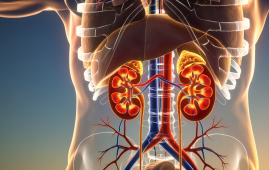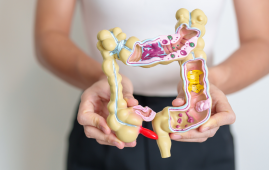

A recent study published in the Journal of Orthopaedic Research reveals that altered knee joint movement after anterior cruciate ligament reconstruction (ACLR) may contribute to early-onset knee osteoarthritis (OA). This finding is particularly concerning for athletes and individuals who undergo ACL surgery, as it highlights a potential long-term complication.
Key Findings: How ACLR Affects Knee Movement
Using a dynamic X-ray imaging system, researchers compared knee joint movement in ACLR patients with those of healthy individuals. The study found that:
- ACLR patients had a higher vertical position of the patella (kneecap) compared to healthy controls.
- The patella-femur contact point was also higher in ACLR patients, which could alter joint mechanics.
- A longer-than-normal patellar tendon was identified as the cause of the higher riding patella.
- Surprisingly, this altered patellar positioning was observed in both the operated and uninjured knee of ACLR patients.
How This Knee Movement Increases Osteoarthritis Risk
Investigators suggest that a higher-riding patella may shift load-bearing areas within the knee joint. This displacement could:
- Expose previously unloaded cartilage to increased stress.
- Leave previously loaded cartilage without sufficient stimulation, which may accelerate degeneration.
This structural change might lead to premature wear and tear, increasing the risk of knee osteoarthritis in ACLR patients.
What’s Next? Future Research Needed
Experts are still uncertain whether the longer patellar tendon is a pre-existing condition, a result of ACL injury, or a consequence of ACL reconstruction surgery. Further research is needed to determine its origin and develop preventive strategies to reduce osteoarthritis risk in ACLR patients.
Conclusion: A Call for Better Post-Surgical Management
This study underscores the need for improved post-operative rehabilitation and knee biomechanics assessment in ACLR patients. Understanding these risks can help clinicians refine treatment protocols and potentially mitigate early-onset osteoarthritis.
more recommended stories
 Circadian Control of Neutrophils in Myocardial Infarction
Circadian Control of Neutrophils in Myocardial InfarctionKey Takeaways for HCPs Neutrophil activity.
 E-Cigarette Use and Heart Attack Risk in Former Smokers
E-Cigarette Use and Heart Attack Risk in Former SmokersKey Takeaways for Clinicians and Nurses.
 36-Week Pre-eclampsia Screening May Reduce Term Risk
36-Week Pre-eclampsia Screening May Reduce Term RiskA New Preventive Strategy for Term.
 Cardiovascular Risk and Sudden Cardiac Death in Diabetes
Cardiovascular Risk and Sudden Cardiac Death in DiabetesRising Sudden Cardiac Death (SCD) Risk.
 Poor Kidney Function and Alzheimer’s Biomarkers Explained
Poor Kidney Function and Alzheimer’s Biomarkers ExplainedPoor kidney function may influence levels.
 Walking Speed Before Hip Replacement Predicts Recovery
Walking Speed Before Hip Replacement Predicts RecoveryNew Evidence Points to a Simple,.
 Neuroblastoma Drug Combo Extends Survival in Models
Neuroblastoma Drug Combo Extends Survival in ModelsA Promising Shift in High-Risk Neuroblastoma.
 How Soybean Oil Impacts Weight Gain and Metabolism
How Soybean Oil Impacts Weight Gain and MetabolismWhy Soybean Oil May Affect Metabolism.
 Coffee and Cognitive Function: Evidence Review
Coffee and Cognitive Function: Evidence ReviewA new narrative review in Cureus.
 Colorectal Cancer Screening Rates Low in Adults 45–49
Colorectal Cancer Screening Rates Low in Adults 45–49Recent UCLA research reveals that colorectal.

Leave a Comment